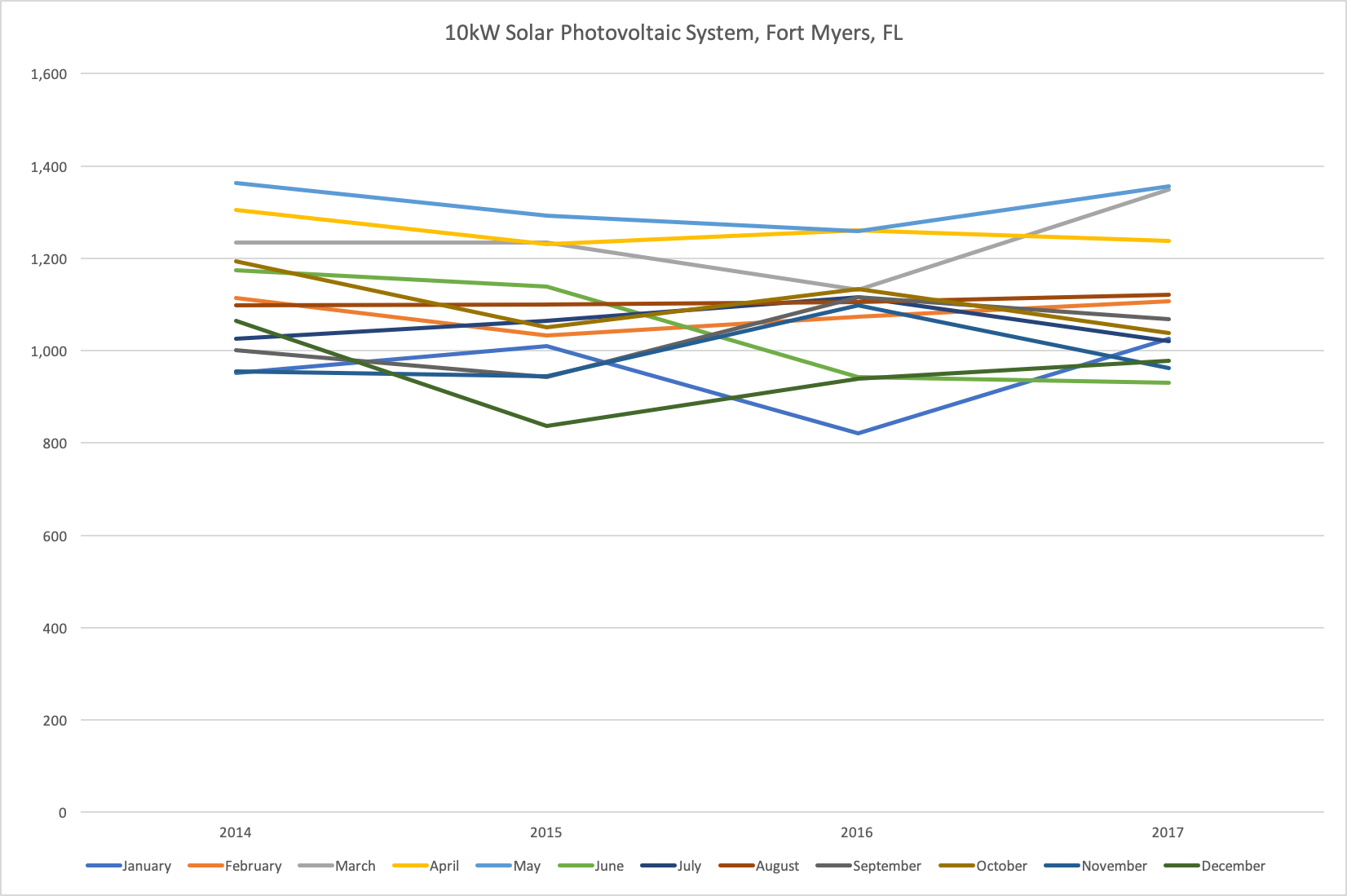In the industry, we make fairly broad generalizations about how much you will save with solar panels. We can’t tell you what your electric bill will be because we can’t control your energy use. Your choices have a lot to do with how much electricity you need. But we can tell you how much energy your solar energy system should produce (how much it will offset your electricity usage).
But there are no guarantees with the weather. We use sophisticated computer models that have a range of error, so there will be variability from month to month and year to year. But how much? One of the most popular models used is PVWatts by the National Renewable Energy Labs. Their documentation states:
“The errors may be as high as ± 10 % for annual energy totals and ± 30 % for monthly totals for weather data representing long-term historical typical conditions. Actual performance in a specific year may deviate from the long-term average up to ± 20 % for annual and ± 40 % for monthly values.”
The best way to look at this is with some real data. I selected a system with a 4-year period that was tracked with real data using Enphase microinverters. The results are interesting.
What it boils down to is predictability. When you look at which months are most predictable, it appears that April and August are very predictable. January, March, and June are the most unpredictable.
Now, this is just a small sample and covers a relatively short period of time. It’s also just one system. This one happens to be due south with a 23 degree pitch with some minor shading in the morning and afternoon on the lower corners. Homes with different orientations and pitches may have dramatically different results. Still, it’s interesting that the data proves the models we use are accurate in terms of the expected variability.
The takeaway is that you shouldn’t have short-term expectations. If your salesperson says you will produce X in July, that could swing up and down from year to year. Additionally, you will have good years and bad years. We can’t control the weather. Ultimately solar panels are a long term investment and everything should come out pretty close to the modeled performance over the long term.




